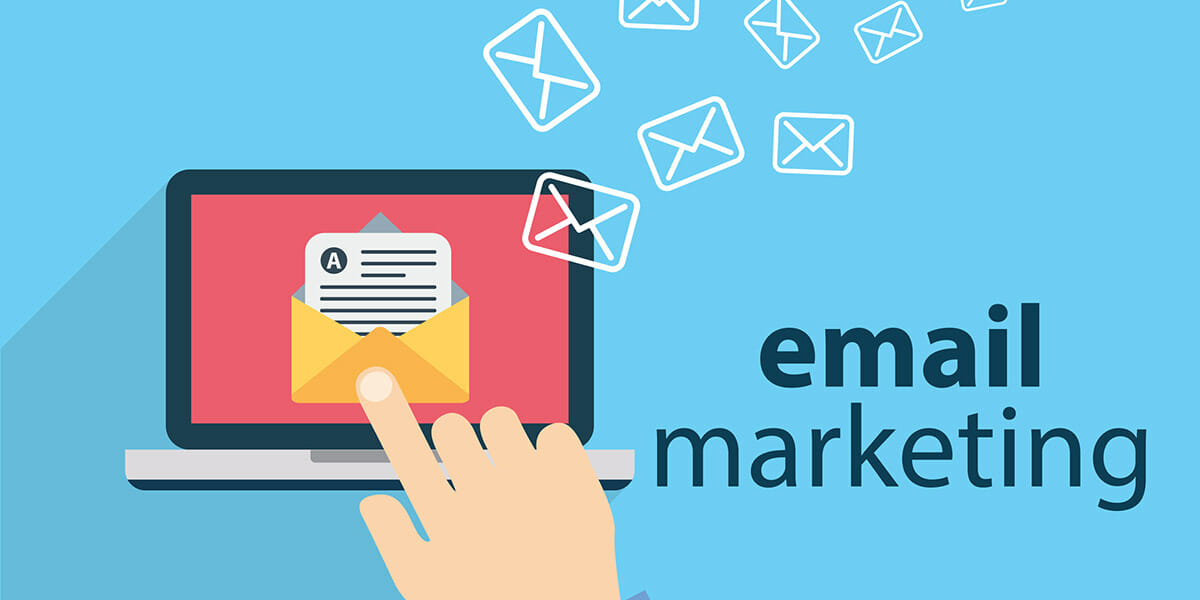Getting someone’s email address can feel like a win, but the truth is that it’s not too difficult to do this. Most people have multiple emails, and they’re often nonchalant about handing them over in exchange for coupons and promotions. While it’s nice to know that you can grow your subscriber list, it also means that you’re competing against many other email marketers who are also trying to attract, engage and convert leads.
Even though email marketing is competitive, it’s a channel that brings high ROI. To ensure you’re making the most of it, here are seven steps to creating an effective email campaign for your brand.
1. Clarify Your Goals
If you want your campaign to be successful, you need to take a step back and clarify what you are trying to accomplish.
For example, if you want to bring attention to a specific cause, you might send out an email that shares uplifting stories or a request for donations. If you’re looking to bring more traffic to your site, your email newsletters could include links to popular content on your site.
And, if you want to generate more sales, your content might focus on promoting new merchandise, linking content to your best-selling products and welcoming new customers. Knowing your goals helps you create strategic copy for your emails.
2. Select an Email Marketing Platform
If your email needs are fairly simple, it’s likely that your current CRM can handle them. But, if you’re looking to build email marketing campaigns that include email triggers and autoresponders, you’ll need a dedicated email marketing service provider.
There are many email marketing providers out there, and a few of our favorites include MailChimp, Constant Contact or GetResponse. Weigh the benefits to each and choose the one that best meets your marketing goals. Also, consider your budget and the platform’s ability to grow with your business in the future.
3. Build an Email List
It can take time to build a strong email list, but don’t be tempted to buy email addresses. You’ll end up with a list of people that probably aren’t interested in your product or service. Instead, start gathering contacts from your CRM, ecommerce platform, email accounts and current email list, if you have one.
If you’re growing your email list from scratch, here are some tips to follow:
- Attract visitors with compelling content
- Offer gated content, such as white papers and research reports
- Make it easy to subscribe
- Offer guarantees against spam
- Offer promotions for subscribing
4. Segment Your List
Once you have a list of contacts, you can divide them into smaller groups based on their similarities, a process called segmentation. The purpose of segmentation is to be able to send highly targeted content to specific groups of people. Emails that are relevant and personalized are more likely to be opened, and if they’re opened, there’s a higher chance of conversion.
Here is some of the criteria you can use to segment your groups:
- Geography
- Demographics
- Interests
- Engagement
- Past purchases/amount spent
- Position in the sales funnel
- Time since last purchase
5. Create a Campaign
Using your email marketing platform, you can create a campaign that will help you reach your marketing goals. The platform should guide you in the right direction, which usually consists of choosing your recipients and the template you want to use. Your creative input is still needed, so be sure to give your campaign the appropriate attention.
Here are the main parts of a campaign:
- Header. This is what recipients will see in their inbox. To entice people to click, send your emails from a personalized account that links back to you. Include a hook, such as “claim your 20% promo code.” Also, include a preheader that shows up under the subject line.
- Body. Once a recipient opens your email, you have to hold their attention. The best way to do this is by getting them to click through one of your links. Keep your content clear, concise and to the point. Include visuals and CTAs, and make sure your emails are formatted for readability.
- Footer. Wrap up your email with your contact info, social media links and unsubscribe links. This gives recipients all the tools they need to continue engaging with you. And, even if a person does unsubscribe, use this as an opportunity to learn what you could be doing better.
6. Enable Autoresponders
One of the brilliant things about email marketing is that a lot of your communications can be automated. An autoresponder is a program that automatically sends emails based on a user’s actions. The emails are designed to nurture leads through the funnel so they are more likely to convert. Rather than keeping track of these leads and manually sending them emails, the autoresponder does this for you.
Some of the best automated emails include:
- Welcome emails
- Thank you emails
- emails
- Activation emails
- Customer satisfaction surveys
- Event countdowns
- Shopping cart reminders
- Renewals, reminders & anniversaries of subscriptions
7. Track and Optimize Your Results
Last on our list is tracking, analyzing and optimizing your results. You can split test just about any element on your emails to better understand what your audience likes: headers, CTAs, content design, templates, offers, etc. Here are some of the metrics we recommend paying attention to:
- Unique open rate
- Click-through rate
- Click-to-open rate
- Bounce rate
- Unsubscribe rate
- Spam complaint rate
Use Google Analytics to track these metrics. Based on the data, you can optimize future email marketing campaigns and improve conversions.
If your first campaign didn’t move mountains, don’t worry. Learn from your mistakes and optimize your next campaign for improved performance. It often takes a few tries to really see what your audience prefers. Every tweak you make gets you closer to your end goals.
To create, manage or optimize your email marketing campaigns, contact Magna Technology today.




